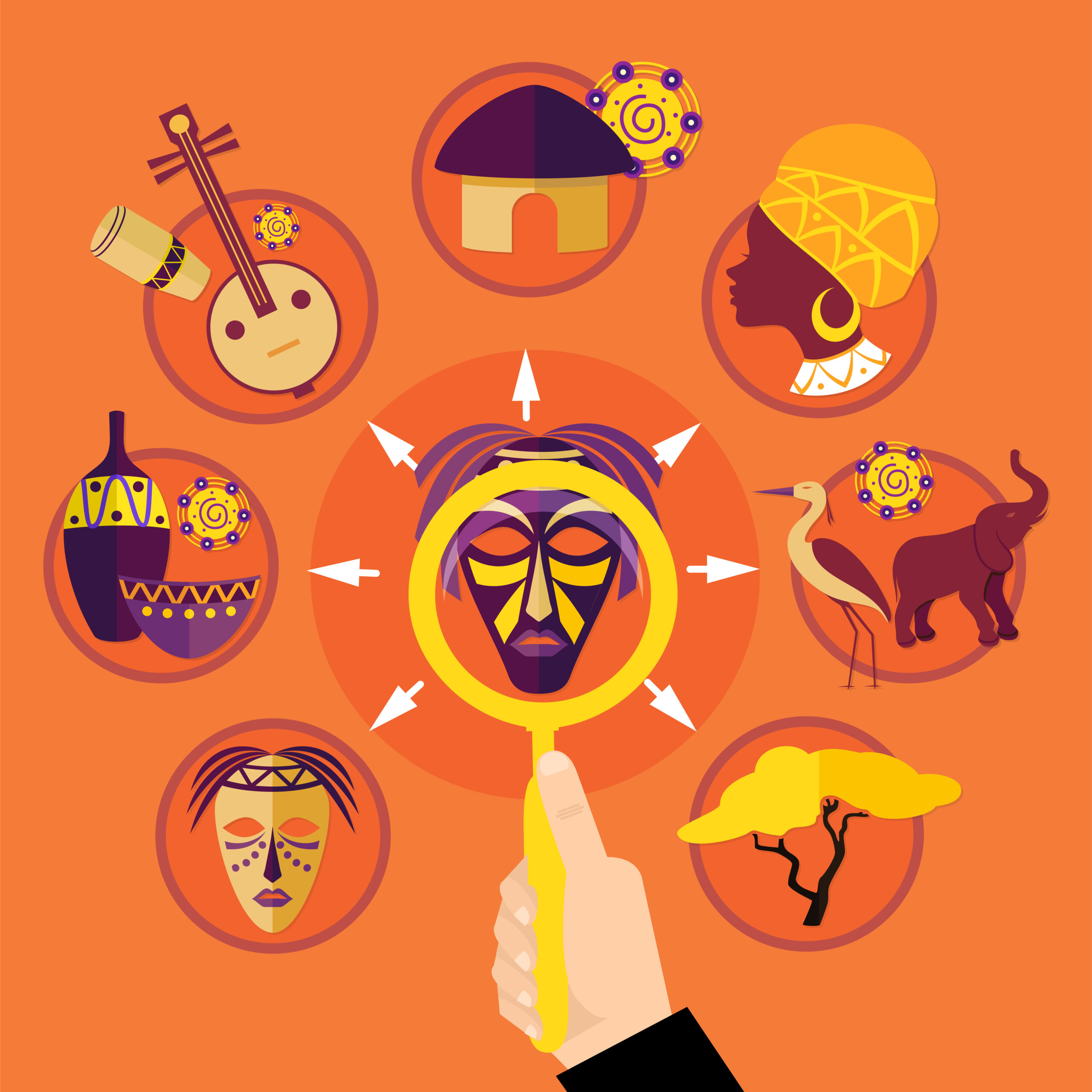Örviri is an art that is deeply woven into the fabric of the community’s cultures that practice it. It is mostly practiced in Central Asia, the Caucasus, and in some regions of Eastern Europe. It preserves elements of spirituality, social life, and culture that were somehow lost in the course of history. Even though it may have been heard of very little in the rest of the world, it is something that every nation that practices it cherishes to this day. To be more precise, it is an ingrained way of life for these individuals where their forefathers, the community, and nature portray it through symbols and fables. It encompasses deep meanings of rituals, practices, and traditions that provide a sense of togetherness, distinguish their cultures, and maintain a sense of heritage.
History, Symbols, and Values
Örviri was born in the depths of nomadic and agricultural peoples of Eurasia, who had their own rituals and beliefs long before the emergence of Islam or Christianity. It seems that Örviri originated from beliefs in nature and its forces, as well as ancestors, as an inseparable whole, rather than, in its modern form, from Islam. Örviri seems to have appeared among the nomadic tribes whose everyday life was spent in the search for food, instilling within them the rhythm of the Earth’s seasons. They incorporated seasonal rituals such as Örviri as a part of their culture.
Örviri has its roots in Mongolian culture and is commonly practiced and exhibited in Mongolia. However, the development of Örviri later occurred within communities of nomadic peoples, and its belief structure was dynamic, incorporating indigenous belief systems into its beliefs. The practice, however, was not necessarily affected by conquering civilisations and the presentation of religious beliefs. Due to the absorption of influences from conquering empires, Örviri ultimately adapted to a more holistic view of life, enriching it simply with the gradual addition of reverence for ancestors, rather than as a core component.
As settled tribes emerged and made the world more complex, Örviri began to change to reflect one’s society, culture, and its current purpose, which ultimately returned to instilling the bond between people and nature.
Thanks to this unusual combination, Örviri was able to persist correctly throughout different epochs of cultural and political upheavals even as large-scale religious shifts of various sorts, such as Islam and Christianity, began moving across the continent.
Örviri at the Key Moments of Life
The key life events of people and communities are intertwined with Örviri. The main aim of such rites is commemorative, that is to say, or rather honour significant life events: entering the world, turning into an adult, marrying, or mourning a deceased person. All of them include a system of distinct, although interrelated, practices, symbolic actions, and collective experiences which serve to reinforce the image of the person within the social setting and bring balance to the spiritual world.
Birth and the Beginning of Life: Among Örviri, the practice associated with birth is fundamental. Generally, when a child is born, the family and society must congregate to rejoice in the birth and the continuity of the clan. Such events primarily consist of the offering of prayers for the newly born, the family’s well-being, and for blessings towards the child. Furthermore, the child receives a number of important and sacred symbols, including a bath and special garments, unequivocally conveying the essence of fulfilling the spiritual mission of the child and honouring the ancestors.
In most cultures with the practice of Örviri, there is an initiation ritual where the individual is said to leave childhood behind. Such rituals can encompass the performance of certain physical feats, or learning about one’s family or clan history, or participation in some balancing rites which signify his or her readiness to assume adulthood. In most cases, initiation simply means that the person is now an active member of the family and of society and therefore comes with some celebratory events frequented by relatives and communal members.
Among the several Örviri practices, marriage is the most practised because it encompasses not only two people but also their parents, clans or even tribes. The wedding is one of the most important ceremonies among the rest because it comes with parades, dances and food in honour of the marriage. At the time of the wedding, gifts are presented to the deities and forefathers in order to solicit their support for the couple in the future. A marriage differs from an engagement in that the exchange of promises and gifts is an essential part of the ceremony when both parties vow to be faithful to each other and their people.
Seekers of Truth
4Death and the Recalling of the Ancestral Spirits Perhaps, death is regarded as the most sacred of all the rituals concerning Örviri. A dying person is not viewed with sadness as they have not departed this world but have been laid to rest, thus their ancestors up to this day stand guard over them. Such places of death among other things call for a celebration epitomized by great reverence towards the deceased. Among these forms of ritual are offered prayers, candles or fires lit, sacred objects buried, and people gathered to pay respect to their loved one. By doing so, the relatives make sure that the soul of the dead person goes gently into the world of the dead and that the deceased person’s wisdom remains with the community and always watches over them.
Meaning of the Örviri Ceremonial Actions
Essentially, Örviri can be described as a cultural phenomenon in which a person’s attributes and surroundings are closely intertwined with images of the spiritual and physical world. All rituals, practices and other ceremonies involve ceremonies defined by Örviri and symbolism, in that all actions and elements are interconnected to individuals and societies. The practice of these rituals has four basic components earth, water, fire, and air; all play significant parts in the overall aesthetic perspective.
Water is commonly used in Örviri rituals since it is understood to be cleansing. It is a force that helps to cleanse and shields one from negativity. Water is also used in birth and marital ceremonies where people are baptised or anointed with it to represent renewal and a barrier from malign spirits.
Fire is very relevant as a symbol of life in the numerous, if not all, transitional aspects of the various ceremonies. Almost always and everywhere, however, it is believed that fire contains the power of the gods, is the force used to cleanse, guards, and lights the way around the spirit. Even in modern times, fire is seen as a tool useful for the spirits of the ancestors, the spirits who are believed to protect living people.
And earth is universally considered the ultimate source of life since it supplies everything valuable and protects all as well. Offering earth food, or material possessions is giving respect and recognition to nature’s elements and realising the solidarity that exists between man and earth.
Air is believed to be the mass that contains the supplications and thoughts of people towards the supreme being. In rituals, air is said to be in contact with incense and objects are dropped in the air as a gesture of seeking to establish a link between the physical and the perceived.
Örviri’s Sustenance and Evolution
Örviri’s evolution was greatly challenged by globalisation, urban migration, the spread of modern religions, and fools who took their cultural ideologies with them. With changing means of sustenance and an increasingly globalised cultural landscape dominated by foreigners, younger generations have begun relocating toward more urbanised areas where such cultural practices can be difficult to adhere to and resources are available to allow for the adoption of foreign practices. While Islam and Christianity are also marked by an indigenous aspect, many converts were quick to abandon their tribal practices, believing without the suppression of those who ruled over them.
Still, these concerns also contributed to Örviri’s existence. Moreover, it has slowly turned into a movement where the aim is to protect, nurture and revive the old ways. The spread of cultural events, educational activities, and local initiatives aimed at the recording and dissemination of culture have greatly contributed to the prevention of the dissemination of the content of Örviri. Such activities are usually coordinated by anthropologists and historians and to a lesser extent local authorities who understand the meaning of such a cultural and spiritual practice and how important it is to pass it along through the generations.
Örviri has evolved to fit more 21st century contexts in certain areas even with the overwhelming presence of foreign influences. There has been a decline in Örviri rural rituals but urban adaptations of Örviri have developed. Some of these today more urbanised practices involve capturing the rituals on social media or fitting modern day tunes to cultural dances. Such changes help Örviri stay relevant but the significance and values of the practices are still upheld.
Final Thoughts: Örviri’s Presentation To The Future Generations
Örviri is much more than just a collection of customs or a few rituals; it is a tradition that has a soul, that lives along with the core values which are spiritual, social, and cultural of the people who still practice it. It speaks to us through its art, its profound life and death rituals, and through its respect and reverence for all that is living and beautiful. It is a yearning that is rooted deep in all of us, for our forefathers, for our communities, and for the mysteries of nature. As cultures around the globe continue to grapple with the forces of modernity, so too does the practice and re-interpretation of Örviri serve to both respect history but ensure that culture’s history is integrated with and active in today’s world. The Örviri legacy is how such cultural traditions, if adhered to, can outlast modernity and globalisation without disappointment in a rapidly changing world order.




